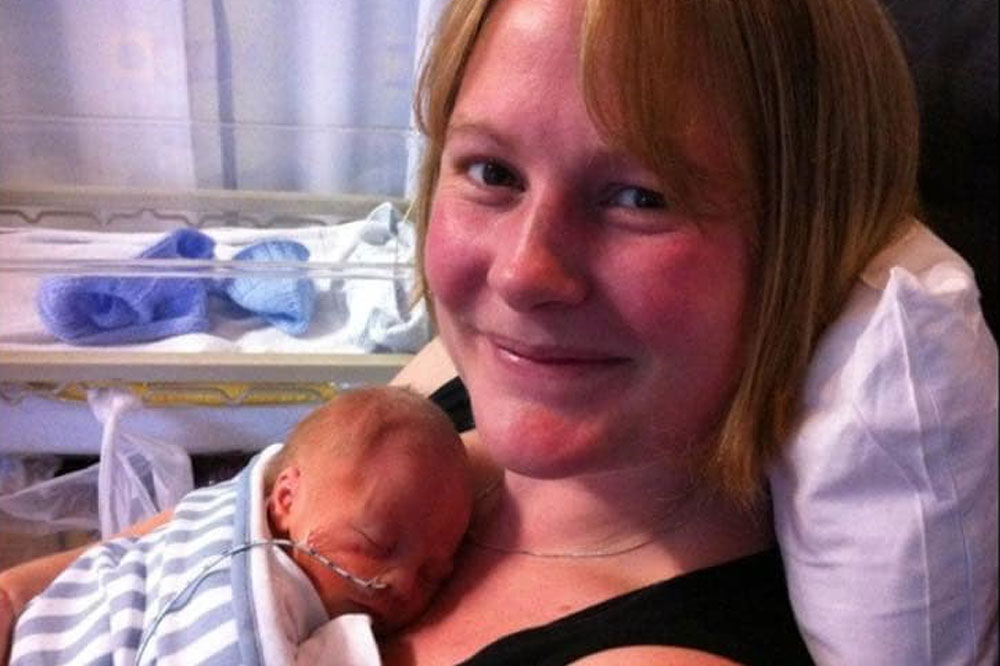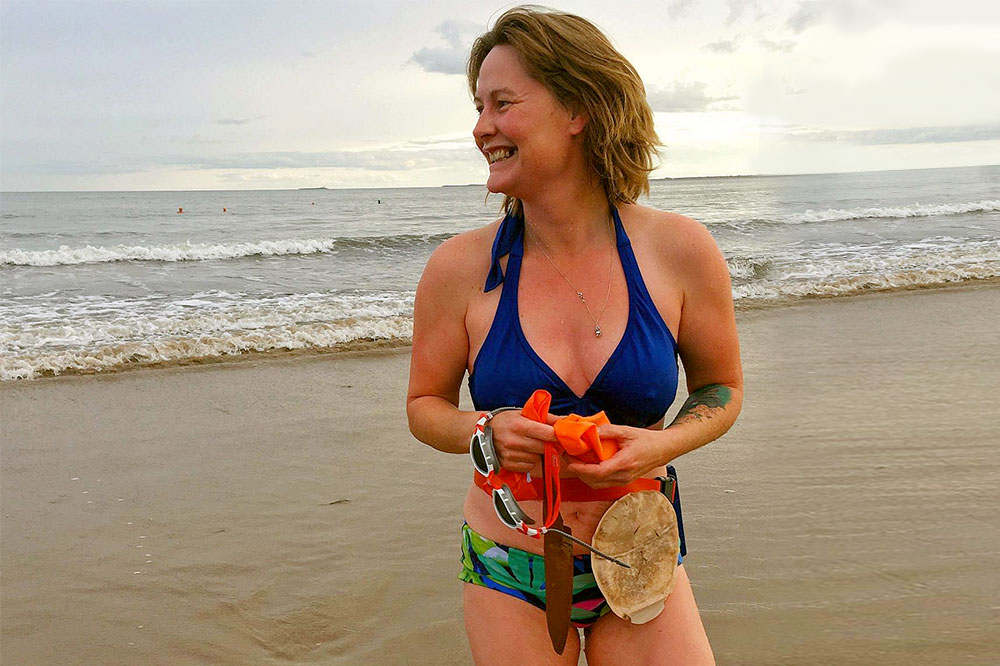From baby, to bag and beyond!
14 March, 2021

Waking up on the first rest day after seven days working in my much loved job as a police officer, I was hit by a sharp pain, my baby signalling that he was on his way at only 34 weeks gestation. My husband, Chris, gathered our hospital bags and we made our way to the hospital. It was 20 October 2011. Several hours later, after three attempted epidurals and a hasty forceps delivery when the baby got stuck in the birthing canal, to our joy our tiny 2kg (4lb 7oz) baby boy arrived. Sam was perfect, and after a quick check over by the special care ward, he was handed over to his anxious new parents.
Once the epidural wore off, I realised I was in huge pain and discomfort from the tear which the doctor informed me I had suffered. Assured that this level of pain was normal, I concentrated my energy on my little baby, learning how to feed him through the tube inserted up his nose. I kept a diary and excerpts from it reflect the true reality of what was happening to me, a grim tale of escalating pain, trauma and medical negligence. Over the next few days, around the tear became extremely hot, hard and painful, so much so that I recorded in my diary on 24 October: ‘I was in agony going to the toilet to pass faeces. I had to be helped from the toilet and someone pulled the emergency buzzer for me. I was extremely distressed and told one midwife… that there was faeces coming from somewhere and I didn’t know where and didn’t even know where my anus was. I was in severe pain sitting down and trying to breast feed and express. A blood clot also burst when I was on the toilet and I was in great pain. It was quite frightening because I knew something was wrong with my body and I did not know what, and I began to dread going to the toilet because of the pain.’
In the ensuing days the staff realised that something wasn’t right, and I was eventually examined under gas and air by a doctor, who diagnosed a recto-vaginal fistula*, abscess and 4th degree tear**. The only option was to have a colostomy to divert faeces away from the wound to help it heal. I was devastated. I didn’t even fully understand what a colostomy was. All I knew was that I didn’t want to have a bag of poo hanging down my leg as I walked about. I was horrified and couldn’t believe this was necessary after having a baby. The first morning after my operation, I woke up to feel something warm spreading all over me. My bag had leaked poo, covering the bed sheets, my clothes, my stomach, and my legs. I was mortified, and utterly distraught that I had this awful contraption attached to me. Pressing the buzzer for assistance I knew then how completely my life had changed.
Two weeks after the birth, Sam and I finally went home. I found this totally overwhelming, wondering how I was going to manage a new–born baby and a new colostomy bag. The bag affected all parts of my life. In my journal entry for 4 November I wrote that Chris and I ‘were lying in bed cuddling when all of a sudden the bag filled and leaked everywhere. I had to rush out of bed and change my clothes which were covered in faeces. It was very humiliating, and I felt a bit depressed that day about it all.’ The effect on our relationship, both physical and mental, played on my mind for a long time, but fortunately Chris was extremely patient, understanding, and supportive. Sex was not something which I was interested in at all for many months. I was too self–conscious about pressing my bag against his body, to want to even try it. Eventually I found some waist wraps, which I used to cover my bag and stop it flapping about when moving. In late November 2013, I discovered I was pregnant. Tragically, I lost the baby at 11 weeks in January 2014.
Trips to the shops were very stressful, several times these had to be aborted when my bag leaked. On 4 January 2012, the day after I found out that my colostomy would be permanent, I recorded how, during a shopping trip: ‘the bag suddenly filled with runny fluid and I had to shout to Chris to grab Sam’s pushchair which I was holding while I frantically rushed to the nearest bar. This was closed so I ran up the street and into a shopping centre, running into an empty bar to use the toilet. It gushed out everywhere when I opened the bag and I had to clean up the toilet seat and floor.
It was so close to me not getting there on time! Very stressful and embarrassing. I hate it… it’s always on my mind and I’m getting really fed up with the whole thing.’
Fast forward to May 2013, when I was trawling through yet more internet forums, becoming increasingly depressed at the misery I found, when I saw someone write that they were grateful for their stoma bag, because without it they would be incontinent. The bag had actually given them a life. This was no light bulb moment for me, but a floodlight! Immediately, I imagined what my life would be like without my bag. I would be faecally incontinent, unable to leave the house and wearing adult nappies. With my bag, I was able to go shopping, walking, even swimming. I began researching how far stoma care had come since the mid 1950s, when stoma bags were bulky, awful contraptions. New bags are lightweight, waterproof, discreet. I suddenly felt euphoric. My bag had given me so much! The stoma had taken away my job, but there was so much I wanted to do.
From that moment on, I resolved to start living my life as I had always wanted. I started saying ‘yes’ to trying things, instead of saying ‘no’, deciding that if this was what I was given, then I was going to make the most of it. I saw an advert for a cycling class, and pushing aside my fears about toilet facilities, bag leaks and noises, I went to a session. I was hooked. I met members of the local triathlon club, and decided to give a triathlon a go, which led to open water swimming.

I have never looked back. In July 2020 I set up a website and Facebook blog, the Stoma Chameleon, a positive, warts and all site, aimed at inspiring people living with stomas and/or birth trauma. A chameleon adapts to its environment and so can we. In a way, having a stoma is the best thing to have happened to me, because it made me realise that life can change in an instant, and so if you want to try something – do it! Don’t be afraid of failure. It’s very empowering to realise what we are capable of, which is pretty much anything. I don’t let my bag hold me back, and nor should you. Go out there and grab what life can offer before it’s too late!
Article taken from our Colostomy UK Tidings Magazine, Issue 61, Spring 2021 – read the full article on our website. Gill’s website can be found here. If you’d like to discuss any of the issues raised in this article, or you’d like support, call our 24 hour Stoma Helpline: 0800 328 4257



